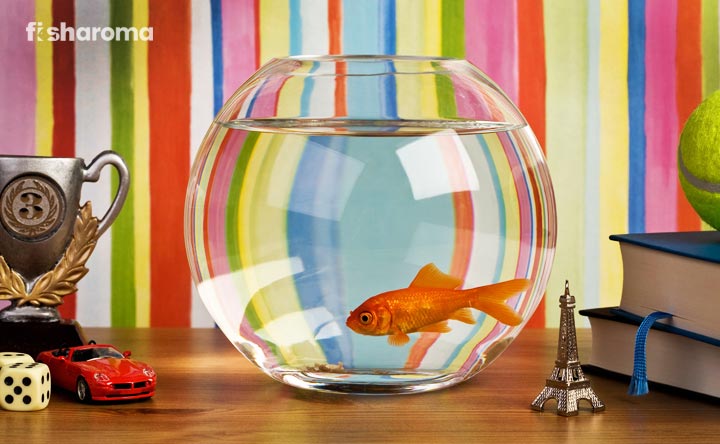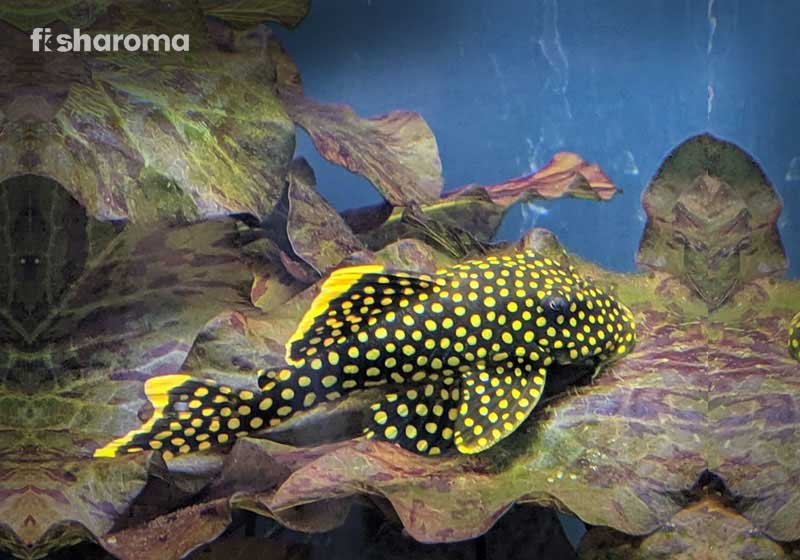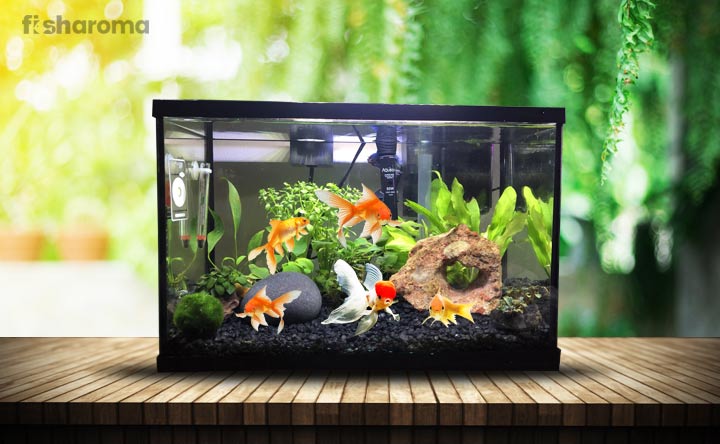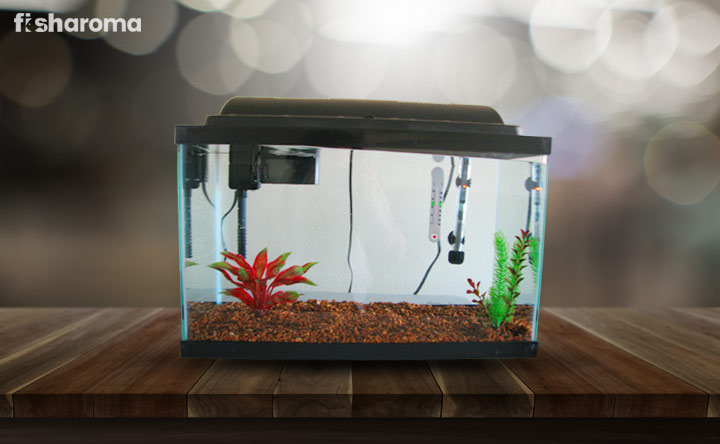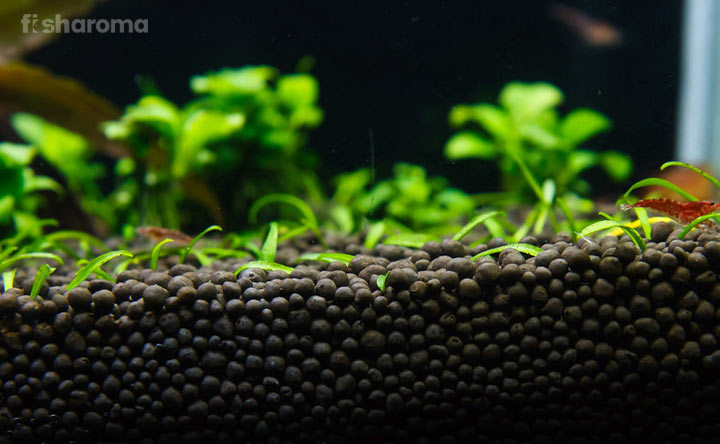How Do Fish Mate? Complete Guide for Breeding a Fish

We have seen our pet fish eating, sleeping, interacting but do you know how do fish mate? As living being, their mode of propagation is also sexual. Like other animals, fish also require a female and a male to bring a new life in the world. However, a male-female ratio is needed to be maintained if you are encouraging the mating and breeding of the fish.
Fish Anatomy for Reproduction
The mating process of human beings and animals might be the same, but the sexing process of all the fish breeds are not similar. To know how do fish mate, first know about their reproductive organs and their functionalities. Take a look at the reproduction anatomy of fish.
1. Testes
The sex organ of male fish is known as testes, and there are two testes that look similar to each other. Only the right testes of the shark are more significant than the left one. The testes develop sperm cells that plays an integral role during sex.
2. Ovaries
The follicular cells of the ovaries suck the sperm and that forms into eggs.
3. Intromittent Organs
The intromittent organ is an external organ of a male fish that delivers sperm during the time of copulation. This organ is present in both vertebrates and invertebrates.
4. Genital Papilla
It is a small fleshy tube behind the anus of the fish, and from this organ, sperm and eggs are formed in fish. It is a secondary sex organ of fish. Every fish doesn’t have this organ.
Mating Process of Fish
Different fish breeds become sexually mature at different ages. However, most of the fish breeds become mature at three-year-old. After getting matured, the young female fish can reproduce but it is not suitable for their health. When you see white spots on the gills of the male fish, it is a sign that it is ready to mate and the female becomes rounder and fatter in that condition. The small-sized adult fish can reproduce fast.
The male starts chasing the female around the fish tank to encourage her to release the eggs after impregnating the females. Most of the female fish can release up to 10,000 eggs. Some eggs get stuck into the leaves of the plants while others lay at the bottom of the aquarium. These eggs make the tank water cloudy.
The fertilized eggs are transparent, and the unfertilized eggs become white. You must remove the unfertilized eggs because they are the reason for fungus and water pollution. You can keep the fertilized eggs in a separate fish tank so that the adult fish breeds don’t eat them. Fish breeds like Guppies, Clownfish, Mollies, Platys, and Swordtails reproduce in a particular breeding season.
Categories of Reproduction of Fish
After knowing how do fish mate, you should also acquire an idea on the classification of the reproduction process. This classification will help you know about the various ways of fish reproduction. There are three main categories of reproduction:
1. Oviparity (Egg Layers)
About 90% of oviparous fish are bony fish. The embryo of this fish develops inside its eggs and outside the body of the parents. The females lay eggs, and the male fish fertilize them. The egg-laying during the spawning season is known as fecundity. The fertility of a fish is related to its height and weight. For example, Ocean Sunfish releases about 300 million eggs in the spawning season whereas the Silver Arowana lay around 50-100 eggs in every season.
The male fish rubs its sexual organs on the eggs by releasing sperms to fertilize the eggs. The egg-layers fall in the following categories:
- Nest Builders: Some fish make bubble nest or nest from plant materials. The male fish usually builds the nests and the females deposit her eggs there. The males also help to fertilize the eggs. Some of the nest builders are Gourami Fish, Betta Fish, Stickle-Backs and Bluegills.
- Mouthbrooders: These fish breeds lay eggs in the water and collect them in their mouth until the fertilization. Some of the mouthbrooders are Gobbies, Blennies, Bettas, Cardinal Fish, and Cichlids.
- Egg Scatterers: The egg scatterers lay both sticky and non-sticky eggs undercover or on the open water. Some fish scatter their eggs on the leaves of the plants or the bottom part of the tank. The male fish fertilizes the eggs by spraying semen over the eggs. Examples of egg scatterers are Zebra Danios, Cardinal Tetras, Goldfish, Tiger Barbs and Koi Fish.
- Egg Buriers: This fish buries its eggs inside the substrate of the tank to protect them from adult fish and predators. The male dives into the substrate to fertilize the eggs. Killifish is one of the examples of egg buriers.
- Egg Depositors: Egg depositors lay their eggs in one place, and the male fish fertilizes the eggs. Some egg depositors are Clownfish, Killifish, Rainbowfish, and Dwarf Cichlid.
2. Ovoviviparity (Livebearers)
The embryo develops, and the fertilization of the eggs takes place inside the womb of Livebearer fish. The anal fin of the male has a sexual organ known as a gonopodium. The male impregnates the female fish by releasing sperm to the female’s body. After this mating process, the ovoviviparous fish breeds develop the young fries in their bodies and give birth to live fries. Some livebearers are Endler’s Livebearers, Mollies and Guppies.
3. Viviparity
Viviparous fish are also livebearers which fertilize and develop their eggs in their body, but only give birth when the eggs are entirely fertilized.
Unusual Ways of Fish Mating
Not all fish mates and reproduces similarly, as we have discussed above. Some fish are unconventional; their sexing and reproduction process is completely different. Have a look at some unnatural process:
1. Unisex Fish
Some female fish lay eggs or give birth themselves without the help of male fish. Usually, they don’t need mating. Sperms are not required for reproducing fries.
2. Hermaphrodite
This fish has both males and female reproductive organ. Hermaphrodite fish is born in one sex and as in the future; it switches into the opposite sex. When a female fish switches into a male, it is known as Protogynous Hermaphrodite and when the male changes into a female, it is known as Protandrous Hermaphrodites. However, both of the categories need the opposite sex for mating and reproducing. Clownfish is an excellent example of Hermaphrodite fish.
Some fish are rare, and they fall under Synchronous Hermaphroditism, and they can reproduce sperm and eggs at the same time. These fish don’t need mating. One of the examples of these fish is Mangrove Killifish.
Breeding Process of Fish in Aquarium
Fish breeds mate naturally in the wild and they are comfortable to breed in the wild, but how do fish mate in captivity? Yes, they mate in the same process, but their breeding process is not similar. You need to put some effort into setting a breeding tank where your pet fish can comfortably lay eggs or give birth to their young ones. You would require monitoring and careful preparation when you are encouraging the mating and breeding of the fish.
Know the breeding season of every fish because most of the fish mate and lay eggs in their breeding season. Only some fish breeds are flexible to lay eggs in every season. Here are some other essential factors that you need to follow for breeding:
1. Select Healthy Parents for the Tank
While choosing fish for mating and breeding, make sure that you have one healthy female and one male fish in the breeding tank. The ratio varies for different species. You need to identify sexually dimorphic and sexually isomorphic fish.
- Sexually Dimorphic: These species can be easily distinguished. Moreover, the sex organs of these fish breeds have a different shape, size, and color. The males are vibrant and more significant than females.
- Sexually Isomorphic: The isomorphic species are difficult to distinguish by their sex. They can be identified by their genital organ during the time of spawning.
Make sure that the parent fish have the right color, pattern, and markings. Otherwise, they cannot give birth to healthy fries. Also check, whether the male and female are compatible with each other. Without compatibility, they can bully each other and die.
2. Set the Tank in a Correct Way
For setting a breeding tank for your pet fish, you need to check the water parameter, tank size, and also keep green plants, small caves, and fine gravels in the aquarium. While keeping water, know the requirement of each fish and according to that, set the water by maintaining the temperature, pH level, and hardness of the water. Clean the filter and change the water daily to maintain the hygiene of the species in the tank which is the most critical factor during breeding.
3. Separate the Fries from their Parents After Fertilization
Once the fish lay eggs, separate them from their parents. Feed them fresh fruit juice, newborn bloodworms, plankton, crushed flakes, and algae for proper growth and nourishment. Once the fries become an adult, you can keep them with their parents.
We hope the features and factors above have solved your question of how do fish mate. These factors will give you a know the genetic perspective of fish mating and breeding which will help you take care of the little fries after breeding.
Interesting Facts about Fish Mating
- Usually, the male fish attracts the female fish for mating through its colors and the shape of its fins.
- Pacific Salmon Fish sometimes die when its sperms and eggs are released.
- Gars lay poisonous eggs that can kill a species if the species eat the eggs.
- Splashing Tetra has a habit of jumping out while depositing eggs on the overhanging leaf.
- The eggs and sperms of Sardine Run are visible in the air.
- Female Bettas develop upright bar markings on their bodies when they become sexually mature.
- Goldfish forms white patches on the upper portion of its body when it is about to lay eggs.
Acquire Knowledge about the Other Activities of Fish
Along with the mating, there are other activities that fish do. If you want to know details about those activities, then take a thorough look at the following articles:
- What do Fish Eat? – If you are petting your favorite pet fish, then know about their feeding requirement first because a healthy diet will help them survive longer. A proper diet will keep your pet fish healthy. For more knowledge, go through the entire article.
- How do Fish Sleep? – No need to get confused about whether fish sleep or not. Yes, their eyes are open because they don’t have eyelids, but they sleep just like any other living creature. Know the exact way of how fish sleep by going through this article.

